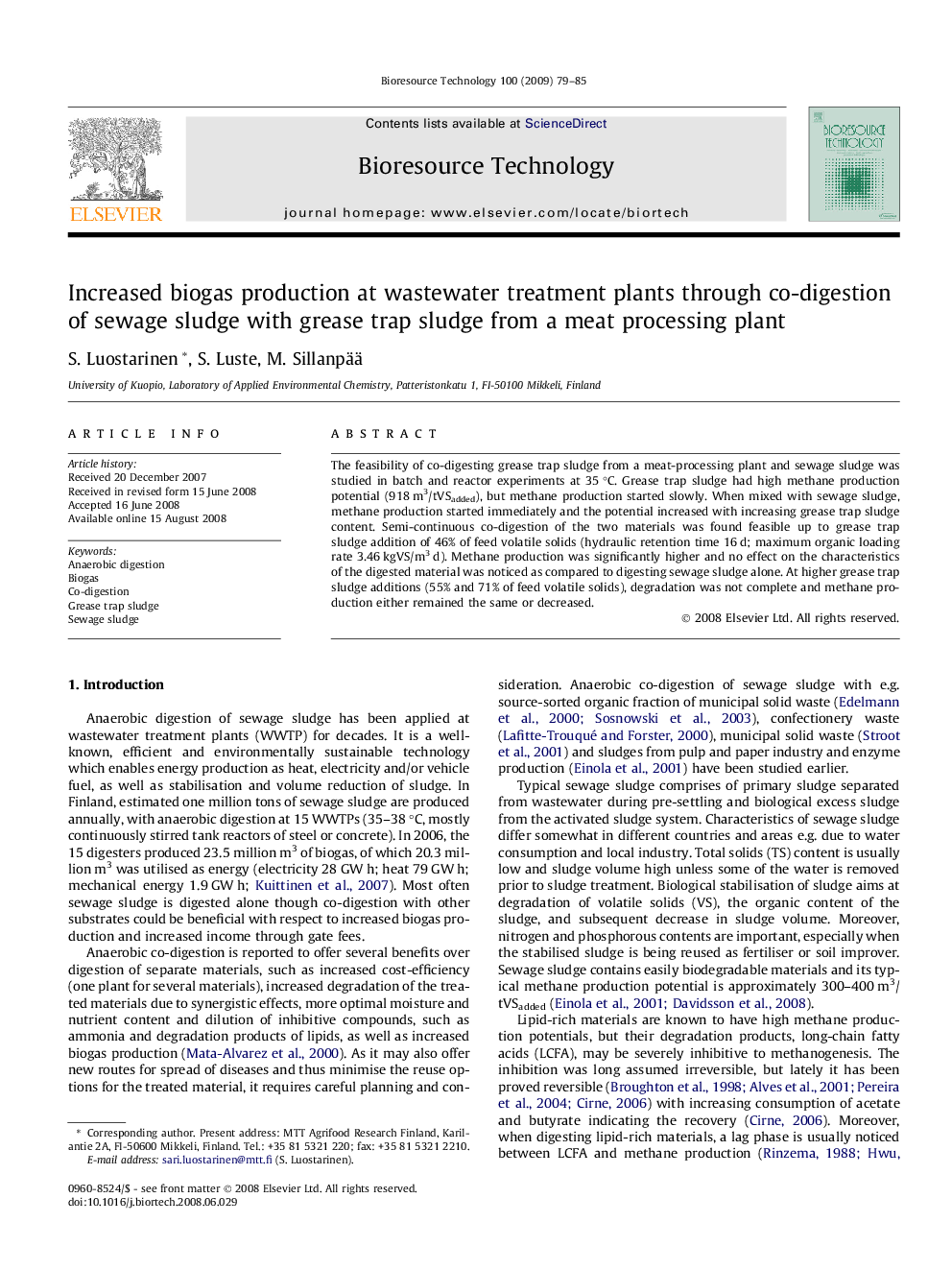| Article ID | Journal | Published Year | Pages | File Type |
|---|---|---|---|---|
| 684228 | Bioresource Technology | 2009 | 7 Pages |
The feasibility of co-digesting grease trap sludge from a meat-processing plant and sewage sludge was studied in batch and reactor experiments at 35 °C. Grease trap sludge had high methane production potential (918 m3/tVSadded), but methane production started slowly. When mixed with sewage sludge, methane production started immediately and the potential increased with increasing grease trap sludge content. Semi-continuous co-digestion of the two materials was found feasible up to grease trap sludge addition of 46% of feed volatile solids (hydraulic retention time 16 d; maximum organic loading rate 3.46 kgVS/m3 d). Methane production was significantly higher and no effect on the characteristics of the digested material was noticed as compared to digesting sewage sludge alone. At higher grease trap sludge additions (55% and 71% of feed volatile solids), degradation was not complete and methane production either remained the same or decreased.
